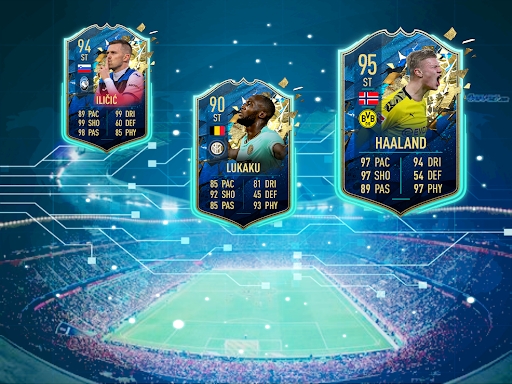Why L2s could finally make AAA games go to the blockchain

Disclaimer: The Industry Talk section contains insights from crypto industry players and is not part of the editorial content of Cryptonews.com.

Over the past decade, blockchain has gone through several cycles of innovation, turning from a singular cryptocurrency to a multi-chain system encompassing billions of dollars in total value. From the many industry integrations that blockchain has seen, with everything from finance to cybersecurity seeing blockchain applications, one industry has continually shined. Gamefi, the balance between blockchain and gaming, has allowed game developers to create a completely new gaming system, offering players the ability to generate currency while playing.
While the GameFI industry has reached a total valuation of nearly 3 billion in just six years, AAA games have not managed to jump to use this new technology. The vast majority of blockchain games are developed by new companies that focus entirely on Play2earn Gaming.
This trend is certainly not from a lack of opportunities from AAA games. Investigation of FIFA’s Ultimate Team, which offers users the ability to purchase kits, stadiums, players and other assets to enhance gameplay. This open market system of buying packs from EA and then opening them to reveal digital assets is notable like many Play2Arn NFT systems, with this having strong potential for blockchain integration.
Actually EA generated USD 1.62 billion from this system in 2021, which leads us to the question of why exactly AAA developers don’t make the leap to blockchain technology and capitalize further. In this article, we take a look at some of the main limitations of lag en blockchain, and show why this prevents AAA from taking full advantage of this system.
We will then turn to Layer 2 systems, demonstrating exactly how this new wave of blockchain technology can be set to revolutionize the world of blockchain gaming and bring AAA titles into the mix.
Let’s get straight to it.
What limitations does a blockchain technology pose for games?
The world of blockchain games has come a long way in recent years, with leading titles such as Axie Infinity or the sandbox that generates millions of dollars over a 24-hour trading period. While the blockchain system currently accommodates these titles, the sheer scale that AAA games are about is almost unmatched.
While Sandbox, a leading blockchain title, boasts an impressive 2 million total players registrations, FIFA 21 attracted 25 million individual players, demonstrates the huge difference that AAA games attract compared to blockchain titles. With this much larger player base, there is a much larger demand that blockchain systems simply cannot handle.
There are three main limitations when it comes to blockchain technology, with the number of players and the need for fast and stable transactions that AAA relies on simply not being possible at layer one. The main issues preventing the translation of AAA games to blockchain are:
- Transactions per second
- Gas tax
- Rely on side chains
Let’s break these down further.
Transactions per second on Ethereum
Ethereum is the main playground when it comes to creating blockchain gaming systems. With a broad developer toolset and a flexible mainchain, Ethereum is the leading blockchain system for development. Although there are many advantages to Ethereum, it has a notoriously low transaction per second capability.
In its current state, Ethereum can offer around an average of 15 transactions per second. Blockchain works by creating individual blocks of information, filled with transaction history. When a block is processed, it becomes permanent, is logged to the blockchain and documented. Since this can only happen about 15 times per second, with each block having limited space to hold information, Ethereum has a problem with transactions being backed up in a long queue waiting to be processed.
Although there are ways around this waiting time, through paying a gas fee – which we will discuss shortly – this is simply not possible for AAA games, as millions of players all need to process data at the same time.
Gas tax
With the low transaction per second price that Ethereum offers, users will pay what is called a gas fee to push their transaction to the front of the queue. Paying this fee ensures that transaction data is pushed to the front of the queue, and then recorded on the blockchain. For all kinds of game assets, users want to be sure that an item they have received in the game will not suddenly disappear. Once recorded on the blockchain, this ensures that no changes can occur to lose this asset.
Even with its extremely low transaction fees, Ethereum has a huge base of users and is the leading blockchain when it comes to it decentralized application development. Yet, due to its success, the average gas price to skip the transaction queue has reached ridiculous levels, currently hovering around USD 15.50 for a single transaction.
While this figure seems high, it is down from around USD 60 just one year ago, demonstrating how bad transaction fees can get. If we then return to FIFA Ultimate Team, with each pack opening a separate transaction, there is no way that individuals will pay for the pack and then pay $15 just so the blockchain recognizes that they actually opened it and received the digital the assets inside.
For this reason alone, a large-scale AAA title distribution is currently impossible within blockchain systems such as Ethereum.
Rely on side chains
One way that many teams of blockchain developers have relied on to overcome the low transaction speeds and high gas fees of working with Ethereum is to turn to sidechains. Sidechains are separate blockchain projects that use interoperability (bridges) to connect to the main chain – in this case Ethereum.
Forging this sidechain link allows the main chain to use features of the former, with Ethereum using sidechains that Ronin to increase transactions per second. Ronin offered a 560% increase in TPS for Ethereum, largely solving the gas fee issue for many blockchain game developers. However, the main problem with using a sidechain is that they are a completely different blockchain developer, leaving the sidechain open to security risks.
Another leading blockchain game, Axie Infinity, used Ronin as a bridge for the Play2earn system. While things were going well, with Axie rallying a large community around the project, things took a turn for the worst in March 2022. Towards the end of the month, hackers used an exploit in Ronin Network to steal over $625 million.
Even with various security features in place, such as nine different validators and five required signatures, Ronin’s network was breached and exploited by the hacker. Events like these expose how fragile sidechains can be, with Axie Infinity suffering a major downturn due to the exploitation of the Ronin network.
For AAA games that deal with billions of USD in transactions each year, they simply cannot risk an exploit or cyber security risk due to the amount of capital they are dealing with. With this in mind, the only viable solution to translation and gas fees was removed, ending blockchain development for AAA titles.
How does layer 2 solve these problems in blockchain gaming?
Although sidechains are not a possible answer to the scalability problem in blockchain, Ethereum has recently announced Ethereum 2.0, which aims to increase the efficiency and speed of this network. One of the ways it does this is by introducing Layer 2 systems into Ethereum, which are further distribution layers of the same blockchain, providing similar benefits to sidechains without the security risks of developing distinct chains.
One of the most important layer 2 ecosystems that receives attention in the media is Bobawhich offers Ethereum a number of possible advantages:
- Improve transaction speed – With L2 systems like Boba, Ethereum is able to speed up the total number of transactions it can handle in a given second. With this approach, the backed up queue of transactions can be handled at a much higher speed. Over time, this will help to radically reduce the gas fee required to work with Ethereum. Once at a very low and stable level, AAA games could migrate to blockchain, with fees up to 60x lower than currently offered Making this a viable option for mainstream developers.
- Provide security – While sidechain systems like Ronin use their own security defenses to keep funds safe, an L2 ecosystem uses the same structures as ethereum itself. With this, instead of worrying about security, each and every connected app is able to ensure the most advanced blockchain cybersecurity defenses, with Ethereum’s impressive defense level strong enough for even a globally played AAA title.
- Provide stability – By expanding the capabilities of smart contracts on Ethereum, Boba provides a more comprehensive system, allowing developers to quickly create and scale games. With speed and transaction scalability at its core, the added stability that L2 gives ethereum makes it a prime candidate for game development – even at a AAA standard.
From improving the transaction speed of Ethereum to providing a cybersecurity standard that is secured by Ethereum itself, the introduction of L2 ecosystems can solve the scalability problems that blockchain faces.
Final thoughts
At the current moment, Blockchain offers a comprehensive system that many game developers can use to create expansive and well-designed P2E titles. However, with the large scale that AAA games require, blockchain’s scalability problem prevents the movement of blockchain for mainstream developers.
As scaling solutions such as L2s become more widespread, blockchains will become faster, safer and more stable, canceling out the problems preventing AAA movement to blockchain. As Boba and other L2 ecosystems continue to innovate what is possible with Ethereum, the ability to move into blockchain will become a working reality for AAA game developers.
With these changes and developments already on the horizon, the next 5 years will be an exciting time for blockchain gaming.
























